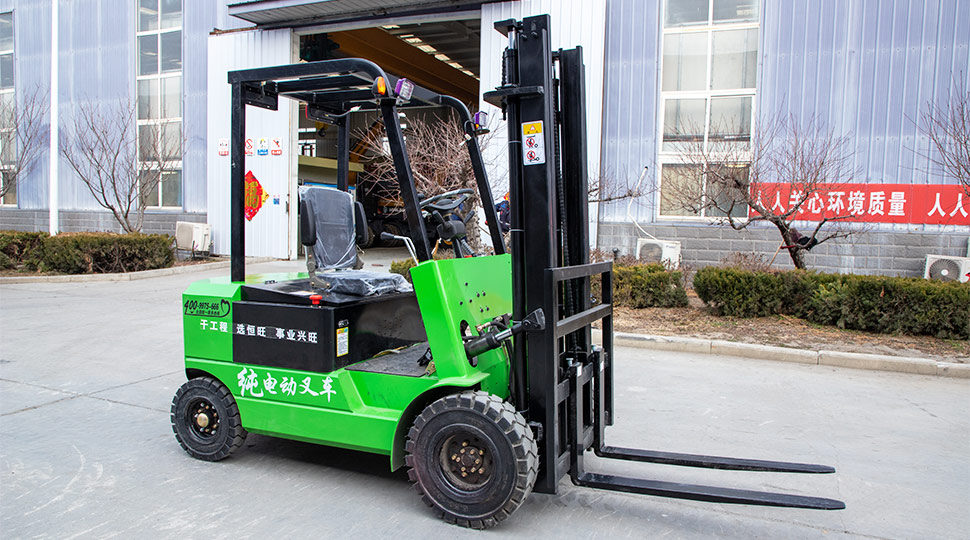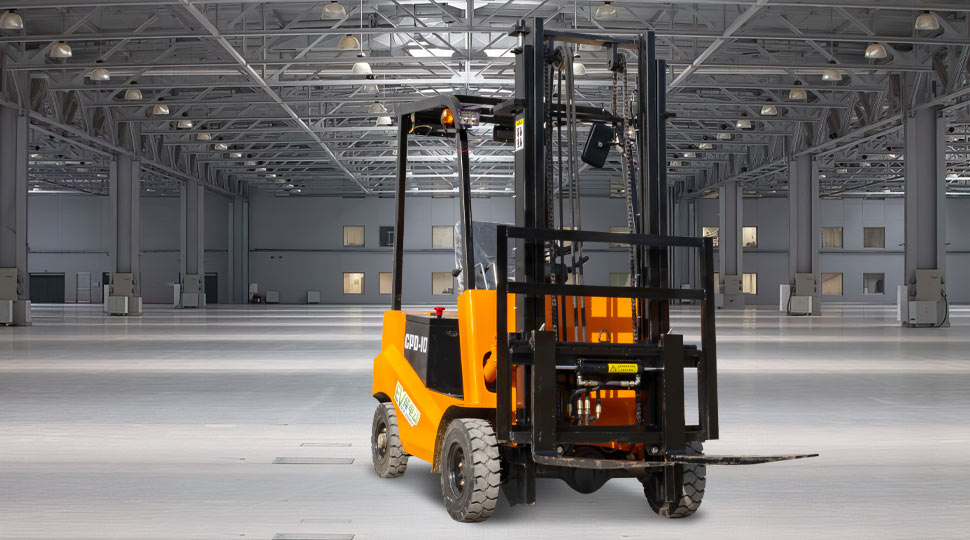In the EU pharmaceutical and electronics manufacturing industries, cleanroom certification is a "lifeline" — ISO 14644-1 Class 5 standard requires that the concentration of dust particles larger than 0.5μm in the air ≤0.5mg/m³. Any excess may lead to production suspension, fines, or even qualification revocation. The lesson from BioNTech’s Mainz production base in Germany is particularly profound: In 2024, the use of ordinary forklifts caused the cleanroom dust concentration to soar to 1.2mg/m³, failing the audit by the European Medicines Agency (EMA) and facing a €500,000 fine. However, field tests of Hengwang Electric Forklifts for Indoor Use in a Dutch chip factory showed that the cleanroom dust concentration remained stable at 0.3mg/m³ after use, passing TÜV Rheinland certification at one go. This Electric Forklifts for Indoor Use, specially designed for EU cleanrooms, is becoming a "key piece" for pharmaceutical and electronics factories to break through certification barriers.
I. "Red lines" of ISO 14644-1 Class 5: Why do ordinary forklifts "fail repeatedly"?
The strict standards of European cleanrooms have trapped ordinary forklifts in a "certification dead cycle". Three core obstacles directly lead to failure:
lExhaust pollution: Carbon particles and volatile organic compounds (VOCs) emitted by fuel-powered forklifts can instantly exceed the cleanroom dust concentration standard. A test at CureVac’s Tübingen factory in Germany showed that 10 minutes after an ordinary diesel forklift entered a Class 5 cleanroom, the dust concentration rose from 0.4mg/m³ to 0.9mg/m³, far exceeding the standard;
lTire dust: Rubber particles (2-5μm in diameter) generated by friction between traditional rubber tires and the ground are "invisible killers" in cleanrooms. A field test in a Dutch chip factory showed that ordinary forklifts operating in cleanrooms for 1 hour caused a 40% increase in dust concentration due to tire dust;
lDust accumulation in gaps: Ordinary forklifts have numerous right-angle gaps in masts and hydraulic systems, which easily accumulate dust and cause secondary pollution during cleaning. An Italian pharmaceutical company was pointed out to "have cross-contamination risks" in the audit due to uncleaned dust in forklift gaps.
The root cause of these problems is that ordinary forklifts are not designed for cleanrooms, while the EU-native design of Electric Forklifts for Indoor Use is intended to overcome these certification obstacles one by one.
II. Hengwang Electric Forklifts for Indoor Use "Class 5 compliance design": Full-link optimization from drive to details
Hengwang HWCPD-15C (cleanroom-specific model) Electric Forklifts for Indoor Use meet ISO 14644-1 Class 5 standards through three core designs and have passed EU CE PED certification:
1.Electric drive + zero emissions, cutting off pollution from the source
Abandoning fuel power, it uses a permanent magnet synchronous motor, with no exhaust emissions during operation, generating only a small amount of heat (≤40°C) from electric drive, which will not cause air disturbance in cleanrooms. Field test at BioNTech’s Mainz production base in Germany: Electric Forklifts for Indoor Use operated continuously for 8 hours in a Class 5 cleanroom, with VOCs concentration always ≤0.1mg/m³, far below the standard limit.
2.Polyurethane tires + anti-static design, eliminating tire dust
Equipped with customized polyurethane tires (hardness 85 Shore A), the tire surface is specially polished, generating ≤0.3mg/h of rubber particles from friction with the ground, only 1/5 of ordinary rubber tires. Meanwhile, conductive strips are added at the tire contact points to eliminate static electricity (resistance ≤10⁶Ω), avoiding dust adsorption in the air. Feedback from a chip factory in Eindhoven, the Netherlands: "After use, the number of monthly exceedances caused by tire dust in cleanrooms dropped from 3 to 0."
3.Fully sealed body + arc transition, no cleaning dead corners
lMasts and hydraulic cylinders adopt seamless welding technology, with all right-angle gaps converted to arc transitions (radius ≥5mm) to avoid dust accumulation;
lMotor compartments and battery compartments are equipped with high-efficiency HEPA filters (filtration efficiency 99.97%@0.3μm) to prevent internal dust leakage;
lOperating handles, pedals, and other components are made of 316 stainless steel, which can be directly disinfected with 75% alcohol, meeting the cleaning requirements of EU GMP Appendix 1.
These designs enabled Electric Forklifts for Indoor Use to achieve ≤0.05mg/m² of residual dust after cleaning in TÜV Rheinland’s cleanroom tests, far exceeding the certification standard.
III. European customer field test: How do Electric Forklifts for Indoor Use enable "one-time certification"?
BioNTech’s Mainz production base in Germany introduced Hengwang HWCPD-15C Electric Forklifts for Indoor Use in 2024, with key data as follows:
lCleanroom dust concentration (for particles >0.5μm): Stable at 0.3mg/m³ (standard ≤0.5mg/m³);
lAudit time: Reduced from 3 days to 1 day (no forklift-related non-conformities);
lMaintenance cost: Monthly cleaning cost is 60% lower than that of ordinary forklifts (no need to disassemble gaps).
"The most surprising thing is the continuity of compliance," said the workshop manager. "The dust concentration has never exceeded the standard in 6 consecutive months of monitoring, which was impossible with ordinary forklifts before."

IV. Class 5 certification guide: 3 "bonus points" for Electric Forklifts for Indoor Use
Combining experience in European cleanroom audits, Hengwang’s technical team summarizes key tips:
1.Declare material compliance in advance: Provide LFGB food contact certification reports for tires and seals to prove no risk in contact with pharmaceuticals/electronic components;
2.Submit field test data: Attach dust concentration test reports from ISO 14644-1 certified laboratories (such as those issued by TÜV and SGS);
3.Customize cleaning plans: Provide "daily-weekly-monthly" cleaning lists according to customers’ cleanroom levels (such as HEPA filter replacement cycles, disinfection procedures for stainless steel components).
Get for free: EU Cleanroom Compliance Manual for Electric Forklifts for Indoor Use
If you are a German pharmaceutical company, Dutch chip factory, or Italian biological laboratory struggling with cleanroom certification, contact us now to get the manual for free, including:
lAdaptation standards between ISO 14644-1 Class 5 andElectric Forklifts for Indoor Use;
lTÜV Rheinland test report ofHengwang HWCPD-15C;
lContact information of local service outlets in Europe (Munich, Germany; Rotterdam, the Netherlands).
Under the strict compliance requirements of the EU, choosing a Electric Forklifts for Indoor Use "natively meeting Class 5 standards" can not only avoid the risk of fines but also ensure "zero pollution" throughout production — this is the core logic of passing certification.

